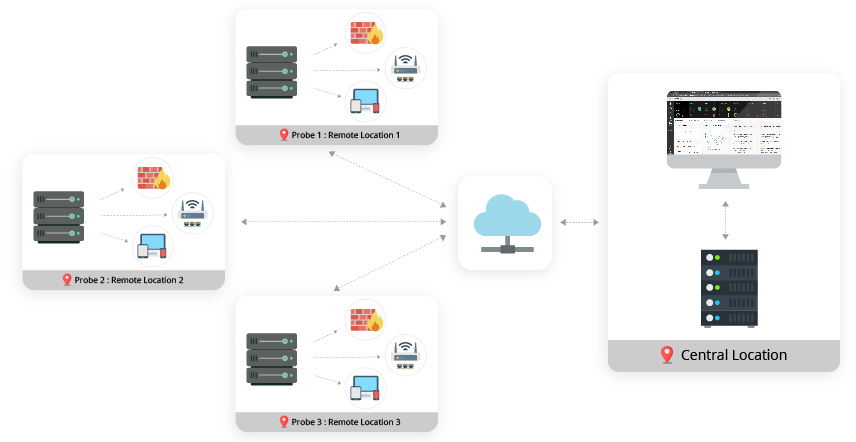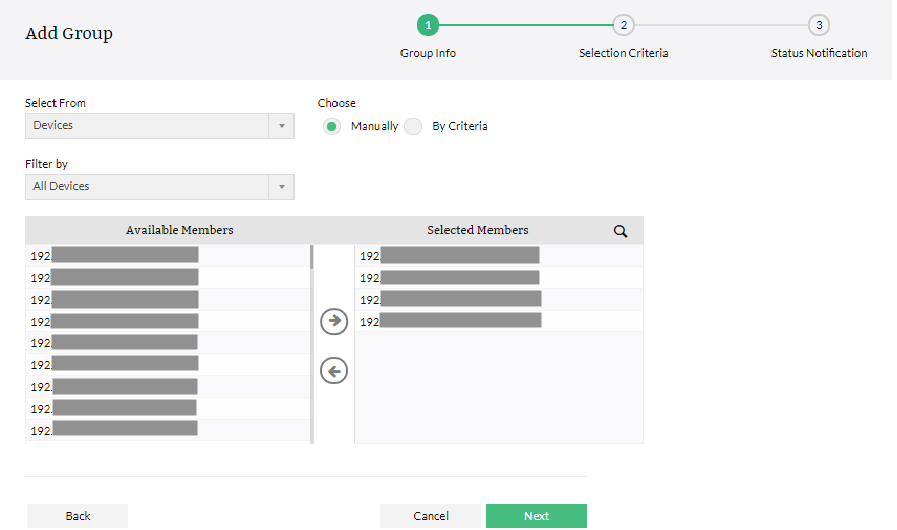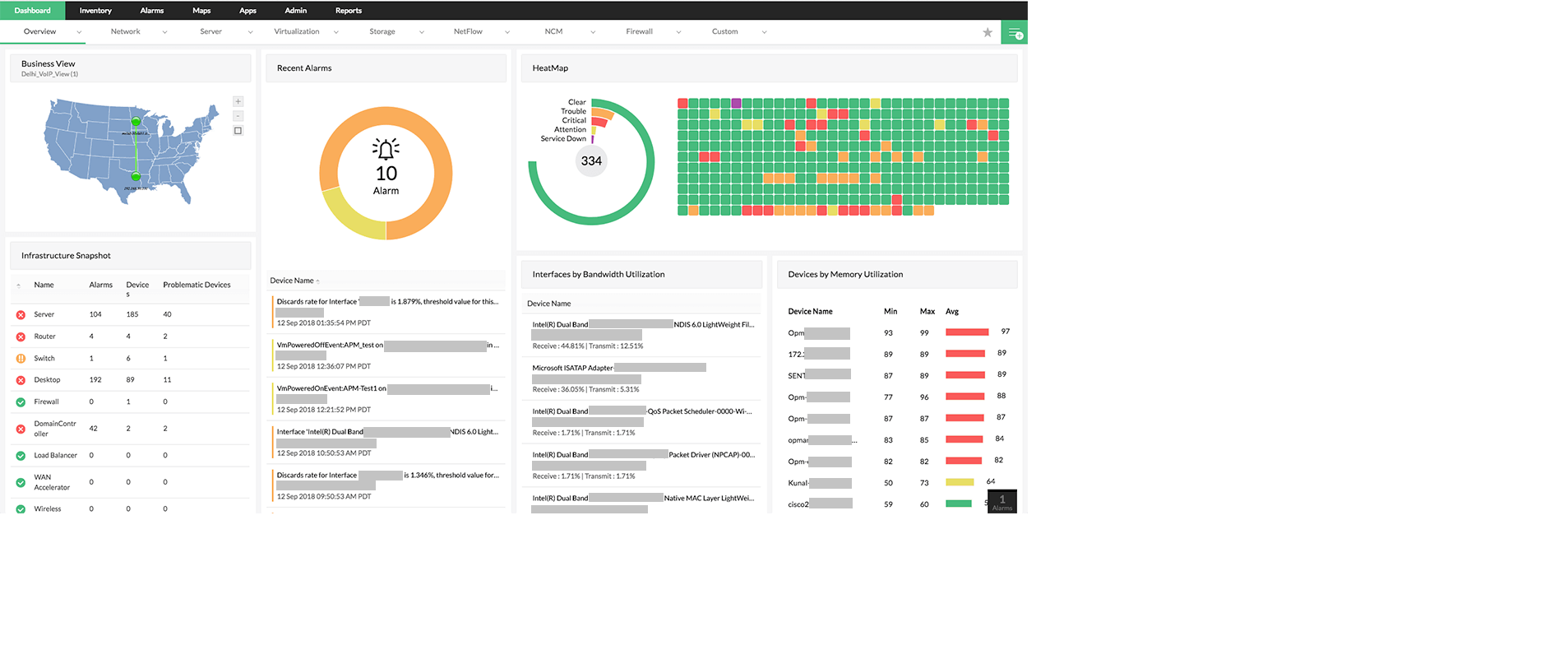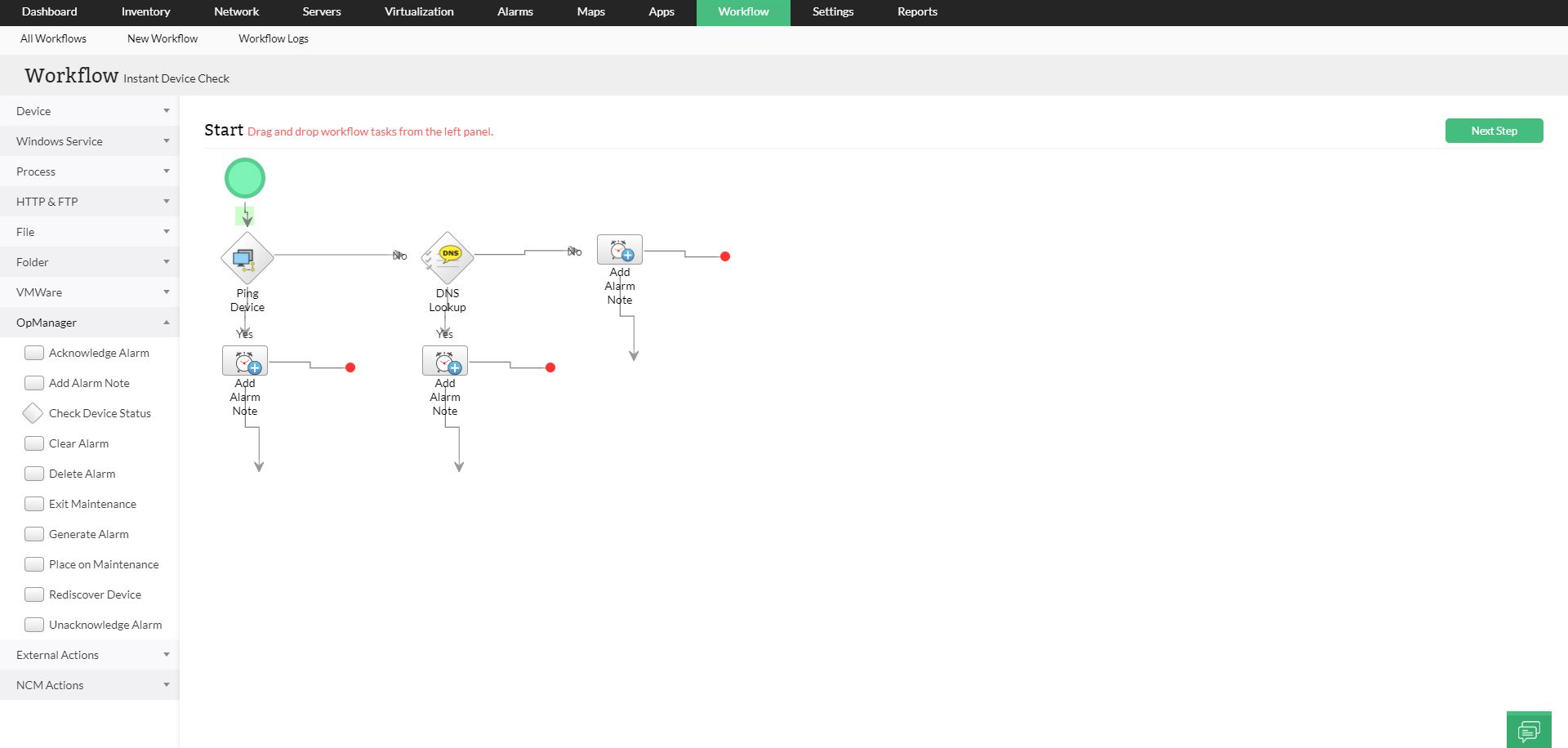In recent times, businesses have migrated to a highly scalable digital infrastructure with a large network consisting of multiple networking devices and servers, running in different locations. A dedicated managed service provider is essential to manage a complex network environment. A Managed Service Provider (MSP) software helps you manage a customer's IT infrastructure and network devices, remotely. You can improve the efficiency, streamline operations and minimize costs of your clients' IT needs by implementing an effective MSP software.
OpManager's Probe-Central architecture lets you manage multiple remote locations and is designed to scale the network monitoring needs of large enterprises. By adding probes at remote locations, OpManager's Central server offers a centralized console to visualize performance hiccups across every client location. You can monitor critical performance metric like CPU and memory utilization, availability status and metrics related to storage and bandwidth.

Highlights:
OpManager's Grouping feature helps Managed Service Providers to assort client's network devices based on location, department type, device type, based on vendors or based on customer preference. Pre-defined rules can be set-up to automatically add devices to specific groups based on criteria. The created groups can be accessed and applied as a default filter. To simplify the clients' network management, OpManager also offers alarm generation based on availability of network devices in a group - this can be viewed in the exclusive Group snapshot page and if the status of any device changes, an alarm will be automatically generated.

OpManager Dashboard provides complete visibility into the current status of your client's network, and displays critical metrics from routers, switches, firewalls, servers, services, application, URLs, printer, UPS and other infrastructure devices in a single screen. With over 150 widgets, the intuitive dashboard can be modified to satisfy the requirements of an individual network administrator or at the same time helps managed service providers present a read-only overview for their customers. Based on customer requirements, MSPs can create custom dashboards to highlight critical metrics in the client network.

MSPs offer pre-defined routine checks, maintenance and automatic first level troubleshooting for customers. Manually executing each of these tasks can be a tiresome and tedious repetitive activity. OpManager's powerful IT workflow automation engine helps you automate tasks without any codes or complex scripts and reduces 'Mean Time To Repair' (MTTR). It offers an agile and flexible drag and drop workflow builder with over 70 workflow checks and actions grouped under 9 different categories. Automate client network maintenance and create a structured contextual workflow to address the IT automation needs of customers, remotely.

Advantages of OpManager Workflow: